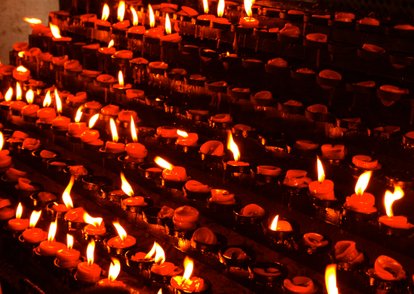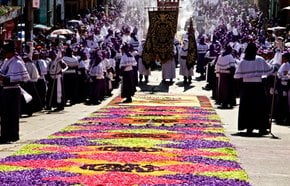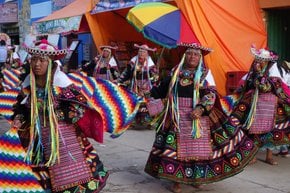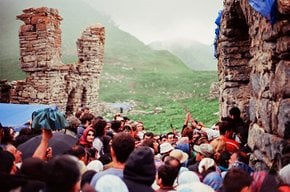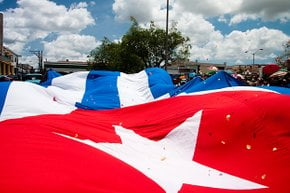Santo Niño de Cebú 2025 in Philippines
See for yourself a miraculous statue of baby Jesus brought by Magellan
Dates: January 19 (third Sunday of January)
Just before his death on the beach of Cebu, the famous explorer Ferdinand Magellan presented this small sacred figure to the Cebu chieftain’s wife, Hara Amihan, to celebrate her and her husband's conversion to Christianity. This beautifully carved wooden figure of Belgian origin accompanied Magellan from Spain to the Philippines. It is recognized as the first and oldest Catholic symbol on the islands.
Festival Dates
The image is famous and is one of the most beloved and recognizable Filipino cultural icons. The Feast of Santo Niño is held in Cebú on the third Sunday in January as part of the religious events held during Fiesta Señor, followed immediately by the Sinulog festival, celebrating the conversion to Christianity. Locals stage parades and enjoy music and dance. Magellan’s death is re-enacted in Cebu every April.
Feast of Santo Niño
Prior to the main event, the devotees spend nine days praying at the novena masses, followed by two days of traslaciones–processions, during which the image of Santo Niño is brought to various spots around the city. Most of the masses are set to take place at Basilica Minore del Santo Niño de Cebu. This year, Santo Niño and the Virgen de Guadalupe de Cebu are set to visit Cebu South Medical Center, Cebu Velez General Hospital, Mandaue City Jail, and other institutions during the pre-fiesta activities.
On the eve of the feast, you might witness the Visperas celebration, which features mass, a foot procession around Osmeña and Imus Avenue, and reenactments. During the solemn foot procession, Santo Niño is paraded through the streets, drawing thousands of believers. The procession is set to take place at 1 pm on January 18th. On the feast itself, locals and pilgrims come to churches for solemn masses and traditional processions. Sinulog Festival snaps multiple days after the Feast of Santo Nino and includes vibrant parades, markets, dancing, and colorful celebrations.
History of the Statue
In 1521, Magellan was killed by angry locals, and the Baby Jesus statue disappeared until 1565, when it was discovered in a wooden box. In this place, the oldest church in the Philippines—the Basilica Minore del Santo Niño—was built. Since then, the statue has been widely venerated as miraculous by Filipino Catholics. The statue got a Canonical Coronation on April 28th, 1965 by Pope Paul VI.



